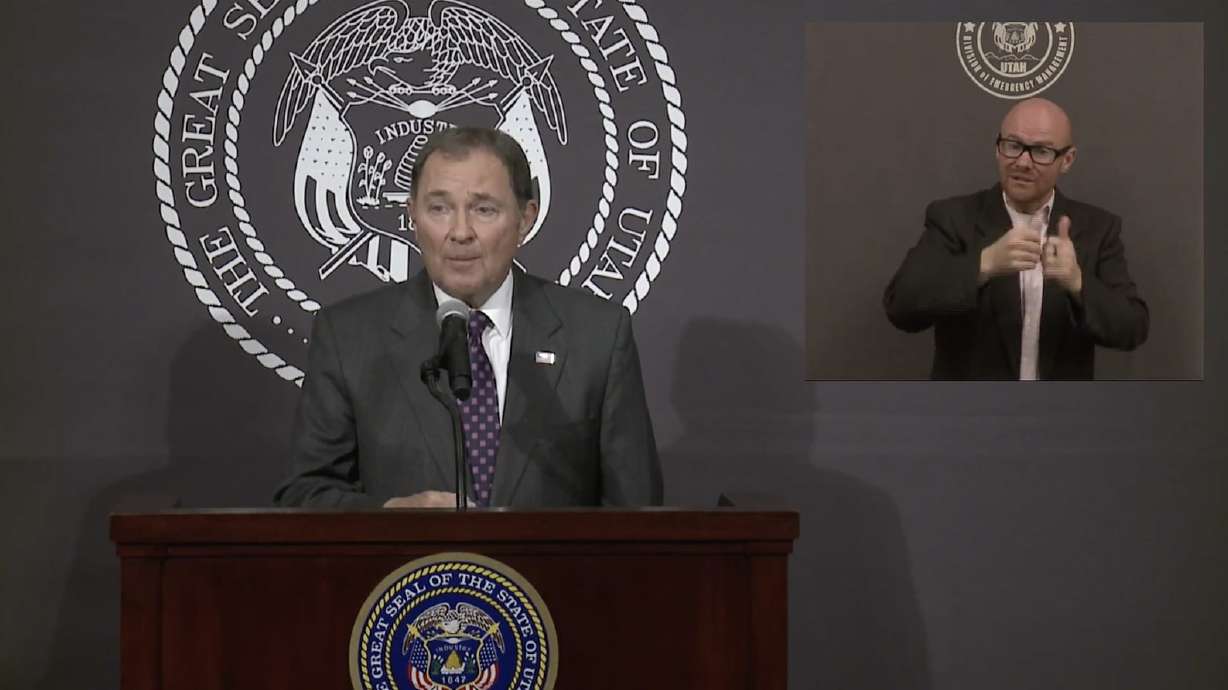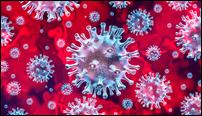Estimated read time: 6-7 minutes
This archived news story is available only for your personal, non-commercial use. Information in the story may be outdated or superseded by additional information. Reading or replaying the story in its archived form does not constitute a republication of the story.
SALT LAKE CITY — Beginning Friday, anyone 18 or older traveling to Utah via Salt Lake City International Airport or through Utah’s major roadways will be asked to fill out a travel declaration form asking them if they’ve been tested for COVID-19 and if they’ve recently experienced symptoms, Gov. Gary Herbert said on Wednesday.
“It’s a new thing — we have the technology that allows us to do this,” he said during a press conference at the Utah State Capitol. “This will allow us to help stop and slow down the spread of the coronavirus as we find people who come into our area who may, in fact, carry the infection.”
The announcement came after the Utah Department of Health announced 108 new cases of the coronavirus in the state, increasing Utah’s overall total to 1,846 and before an estimated travel rush for the Easter holiday weekend.
Those flying into Salt Lake City or driving into the state through nine different state entry points will be asked if they were tested for COVID-19, especially if it was in the last 14 days and what those test results were if Utah is their final travel destination. They will also be asked if they are currently experiencing symptoms of the coronavirus and to also detail their recent travel history.
Roadway entry points are I-15 at the Arizona and Idaho borders, I-70 at the Colorado border, I-80 at the Nevada and Wyoming borders, I-84 at the Idaho border, U.S. Highway 40 at the Colorado border, U.S. Highway 89 near Kanab and U.S. Highways 491/191 near Monticello, according to Carlos Braceras, executive director for the Utah Department of Transportation.
Braceras explained that the department has geofenced the road entry points so that anyone traveling into the state will receive a text message from the federal wireless emergency alert system. That text will instruct them on how to fill out the declaration form once they pull over.
There will also be two exit points at the Salt Lake City International Airport where employees will give travelers cards with QR codes that will direct them to the form. The state’s health department will receive the information and contact the individual if they believe the traveler should begin a 14-day self-isolation quarantine or be tested for the disease.
“This is really a crucial next step for us as a state and certainly as the capital city to make sure that we’re implementing as many appropriate measures as we can to slow the spread of this highly contagious virus,” said Salt Lake City Mayor Erin Mendenhall.
Herbert explained the state has requested federal money to cover at least part of the cost for implementing the system. The order will be done in an effort to gather information and officials won’t start “chasing people down” if they don’t fill out the declaration, Braceras added.
However, Braceras pointed out that UDOT will know how many people are coming into the state from roadways and the airport so they can measure compliance.
“We’re convinced that when people know it’s the right thing to do, they’re going to do the right thing because it’s going to help them and everyone else around them,” he said.
Herbert said he also anticipates there might be a few glitches in the first few days that the system is in place, but added he’s confident that the state will be able to work through any issues.
The program begins just before the Easter holiday and as nicer spring weather has arrived in the state. That might mean an uptick in travel. State officials still recommend that people only travel for essential reasons and not go outside in large groups.
“Warm weather brings people — they want to be outdoors. That’s OK. We just don’t want you to congregate in groups,” Herbert said. “We would like for people to stay in their regions and recreate there. … But we also want to make sure that people only travel if it’s essential — nonessential travel is prohibited.”
There might be new testing measures on the horizon for testing those traveling to Utah.
Mendenhall said last week that the city was seeking state approval for testing those arriving at the airport for COVID-19. She pointed out that UDOT has submitted a request for no-touch temperature sensors that would be used for checking temperatures of people arriving into the Salt Lake City International Airport.
“That kind of logistics and strategy, I think, begins to show you how much we need to work in partnership,” she said. “Testing, even symptom-checking, is not something the Salt Lake City International Airport can do alone, and so we greatly appreciate the partnership that we have and that has continued between the state and UDOT.”
Utah reports 108 new cases of COVID-19
Utah’s number of COVID-19 cases increased by 108 from Tuesday, the Utah Department of Health reported Wednesday. The department also reported no new deaths. There are now 1,846 confirmed cases in Utah, with 158 hospitalizations and 13 total deaths from the disease.
The new numbers indicate a 6.2% increase in positive cases since Tuesday. Of the 36,116 people tested in Utah so far, 5.1% tested positive for COVID-19.
The total number of cases reported by the health department includes all cases of COVID-19 since Utah’s outbreak began, including those who are infected now, those who have recovered from the disease and those who have died.
“We’re in a good place as a state,” Herbert said on Wednesday.
The governor spoke with Dr. Anthony Fauci, the nation’s leading expert on the disease, earlier in the day and reported that Fauci gave Utah’s measures a “thumbs up.”
“(Fauci) liked the fact that Utah got on board early,” the governor said. “If you think about when this first came about, we first heard about this coronavirus … we had our first meetings and organized a task force on March 2 and that’s helped us get a jump, a big start on what needs to be done. We were early in closing our schools compared to other states; we closed in-house dining early compared to other states and took this very seriously.”
Meanwhile, Mendenhall added that she thought the smaller percentage increases — 4.4% on Monday, 3.8% on Tuesday and 6.2% on Wednesday — are a sign that Utah’s measures are working.
“We need to keep working together as a state to make sure that we are all staying home and staying safe,” she said. “Now isn’t the time for us to let off the gas. We have to keep moving forward together and evolving quickly with new methods as we are today.”
Submit Your Questions:











